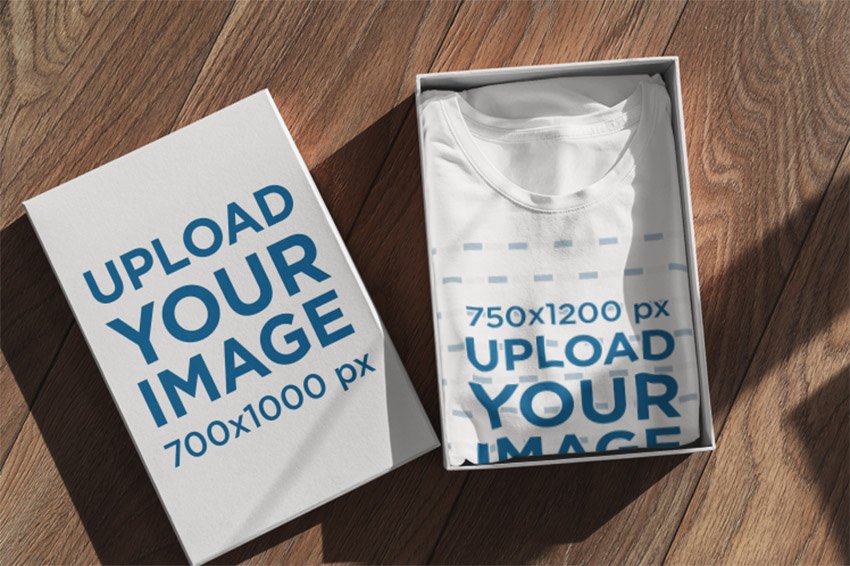A product mockup is a representation of the finished product. Product mockups are commonly used to show a finished product in a real-world environment. Brand mockups may be used to gather input on a product design before mass development or in a demonstration to management, customers, or investors.
Anatomy of a Product Mockup
A product mockup applies architecture and material to a wireframe or original product build that expresses features and user experience. There are a few primary factors to remember-
- Design of the material
Make sure the style of the material, whether it’s an illustration or lettering, is indicative of the finished product, which is especially relevant for visual versions of physical objects like print-on-demand pieces. - Compare and contrast
When doing a mockup, use color in the same manner as it would be used in the finished product. This is especially critical when it comes to digital goods or how your brands are viewed online, so you’ll want to be aware of any comparison problems. Poor contrast will make the design less legible. - Typography
If your product requires some form of typography, the mockup is the best way to play with various types and sizes. Seeing typography in depth will help you imagine the finished result and determine whether or not it achieves the aim. - Measurements
You should use white space to your benefit in product mockups. Leaving any open space around the product will make it stand out in a visually pleasing way.
Create a Mockup
Using modeling tools such as Adobe Photoshop or Illustrator, you can make professional-looking mockups. There are, however, simpler methods, such as using web concept models.
- Application design software such as Adobe Illustrator, Photoshop, and others
Experts or highly competent programmers who have access to and are already familiar with these development programs have outstanding options for making high-quality mockups. However, the software is expensive, and there could be a substantial learning curve before it can be used successfully. - Templates for online architecture
Don’t worry if you’re not a designer. Non-designers can use online development models to rapidly and efficiently produce mockups. The drawback is that you’ll have to focus on your chosen tool’s library of mockups. If you use software with constantly modified libraries, you can have a greater chance of distinguishing the mockup from rival brands.
Benefits of a Product Mockup
- A realistic viewpoint
People and many will be able to see how the finished product will look. A product mockup, whether for an app, a product, or a big city banner, helps to see the end result. - Preliminary revisions
Mockups would allow you to solicit feedback on your project before it is produced. Using mockups in this manner will often detect design flaws that must be addressed before manufacturing. Another example will be print-on-demand companies, which encourage vendors to preview how the finished version would appear on the package so that modifications can be made before printing.
Where Will You Distribute The Mockups?
Mockups can be used to promote your eCommerce company in a variety of areas, including web catalogs, product accounts, and social media.
- Create a catalog
Brand mockups are excellent for developing a product list. To highlight the style, use product-focused photographs with a clean backdrop. - Make changes to your online store
Update product images easily and smoothly. Consider refreshing your product listing in a matter of minutes. - Make a social media post
Use the mockups to create entertaining social media entries, blog posts, advertisements, and more.
Product Mockups Come in a Variety of Styles
The prototype mockup can be built in a variety of ways. When deciding on the best type for a particular product, keep accessibility attributes, branding elements, and other design elements in mind.
- Mockups in physical form
A physical mockup of a product is a physical approximation of a product concept that can be used in cases where the product’s functionality is not yet needed. (Adding software turns it into a prototype.) - Mockups of clothing
It may be time-consuming to create packaging photographs for each version of a piece of clothing. You can quickly produce authentic product previews with clothing mockups. Apparel mockups allow you to customize images of your product with various colors and angles. Apparel mockups include tee mockups, tote bag mockups, hoodie mockups, pillows, caps, and many more. - Mockups in digital form
A computer mockup is a digitized version of a traditional mockup. A digital mockup is an obvious option for digital goods, but they can also be used for physical products, especially when displaying the product in a digital format, such as your website. - Mockups of still images
Still picture mockups are ideal for displaying the concept of a real object, such as a t-shirt or a book cover. Rather than manufacturing the object and wasting money on time-consuming photoshoots, a still picture mockup is a quick and easy way to show consumers what the product looks like in real life. Still picture mockups can also be used for advertising and banner mockups.
Conclusion
Mockups are an excellent business method for displaying items. They’re used by a variety of company sizes and sectors. Using a mockup generator allows even someone with little experience with graphic design to produce professional mockups.


